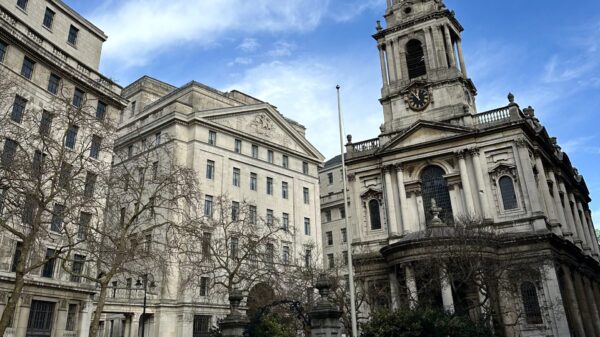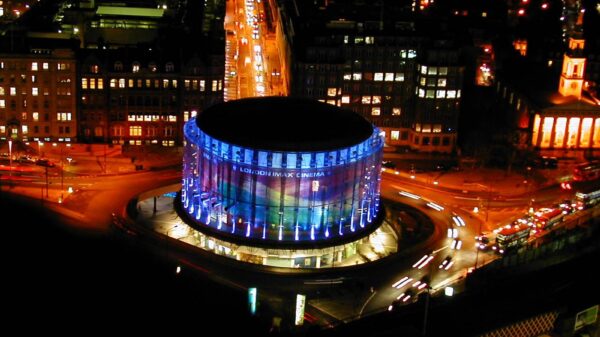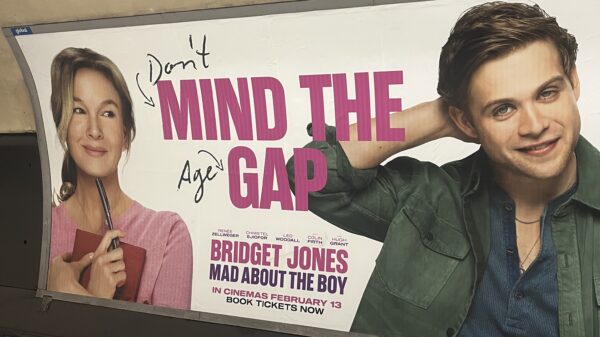Staff Writer Anwesh Banerjee reviews Season 6 of the Netflix modern classic – “The Crown”.
Part one of season six of Netflix’s most ambitious series “The Crown” is definitely a return to form for the makers of the show, after the sheer drudgery and dullness of the fifth season. These four long hours chronicle eight weeks worth of events with a precision and matter-of-fact style of story-telling, that has never been associated with the narrative style of this show before. The beginning of the end of Peter Morgan’s magnum opus is above all one of the bloodiest, coldest and most detached love letters I have ever seen to the life and legacy of Princess Diana (played by Elizabeth Debicki – more on her performance later).
The season begins with a haunting sequence of a Parisian commoner at night, taking his dog out for a walk. As he urges the little animal to take a dump, he frustratingly proclaims, “You either want to do it or you don’t”. Despite the grotesque repulsion of such a scatological image invoked in a frame that puts a gleaming Eiffel (the ultimate symbol of dreamy romance) in the background, this piece of dialogue becomes foundational to the central conflict that drives the entirety of these four episodes. As the man drudgingly continues to walk his dog, we see a black car whir past before crashing in a tunnel ahead the man looks around in shock – before proceeding to call the ambulance services.
The episode immediately moves back in time, by eight long weeks, to show us the life of the most beautifully sad woman in the world and the dramatic turn of events that led to her tragic and untimely death. The leitmotif of the common man as a narrative device to inject a defining shred of humanity into the lives of the members of the royal family has been a recurring writing choice in the entirety of “The Crown” series.
“Couple 31”, arguably the best episode of their fifth season, frames the core story of Charles and Diana’s divorce with the divorce of a series of couples in London applying for and being granted the right to dissolve their marriage on grounds of incommensurable differences. Here too, we see one of the starkest tragedies in popular imaginations and thought – not from the perspective of one of the people it directly affected but from the perspective of a commoner. It is a stray man who notices the crash at a distance and then calls for help.
In real life, the tragedy of Diana’s death too was championed almost as a cause by the millions who came to the streets to mourn her death. A sentiment that is very movingly underlined in a scene where half of Paris appears to come out on the roads and say their final farewell to the People’s Princess, as her mortal remains are driven away in a carriage by Prince Charles. It is also their demand for a more humane reaction from the Palace that eventually prompted the Queen to address the nation.
It is also largely telling of the treatment the creators choose for the subject matter this season. There is an almost clinical coldness and distance as far as the film-making itself is concerned. For the first time, Diana’s story is not presented to us as an overly sentimental sugar rush (cue in Oliver Hirschbiegel’s 2013 “Diana”, starring Naomi Watt) or a forbidden tale of Gothic proportions (remember Pablo Larrain’s 2021 “Spencer” starring the emotionally shattering Kristen Stewart). Instead, the makers opt to distance their gaze from the subject of their love. There occurs a series of incidents, put together like vignettes which the camera gazes on. We are never told what to look at, what to love and what to be repelled by. We are just shown.
Consider the bizarre violence of the Queen (Imelda Staunton in top-notch form) telling the Prince of Wales (Dominic West and his often annoying twitchy lower lip) with the utmost nonchalance that she will not be attending the birthday party of the woman he loves and Charles’ crestfallen look of shock. Here’s a mother who would rather attend to her corgis than nurse her son’s broken heart. But the camera and its gaze are not interested in picking a side. They just show us this scene with clinical precision as it does another – where another mother, the Princess of Wales, goes up to the paparazzi and poses in her leopard-print bathing suit on the condition that they leave her family alone. It is for the audience to place these two scenes in conjunction and figure out the larger leitmotif of the sacrificial mother that Morgan is trying to create. If the Queen has sacrificed her family for the sake of the world out there, Diana sacrifices herself in the hopes of saving her family from the world out there.
The only time the camera is allowed to linger and we are allowed to recede into the sentimental romanticism which characterised much of the earlier episodes of this series is when Diana is with Dodi Fayed. We see the two of them basking in the sun, the lighting flooding the space between their entwined bodies as we gaze upon a blooming story of love that we know is doomed to fail. But even as the camera momentarily stutters and lets us just be with two characters in love, the outside world violently intrudes into their cocoon. The easy flow of our gaze stands jarringly disrupted by the couple which now must be on the run like fugitives escaping the surveilling eyes of the state. As they run amok in Italian piazzas, the cameras run with them too. As they escape the vile sound of the camera shutters (subtlety has never been Morgan’s forte and he underlines the preying nature of the cameras through the over-baked hunter metaphor in the second episode), we are immersed in the claustrophobic stillness of their vehicles’ interiors.
Things come to an eventual boil, in the series’ most stunning sequence, at the Ritz in Paris where, after escaping the paparazzi, Diana enters the restaurant for a final meal – only to realise that every single customer in the room is secretly whispering after recognising her face. As the tears flow from her eyes and her upright figure finally becomes hunched under the weight of this inescapable public scrutiny, we realise the ironic nature of us voyeuristically watching the life of a woman who wanted nothing more than a minute of invisibility and privacy. Perhaps, it is the awareness of this very sentiment which also heavily colours Morgan’s project and treatment of the Diana arc. He refrains from sensationalising the story (except for three supernatural detours which seemed straight out of a Daphne Du Maurier novel) and instead opts for something neater and, surprisingly, more violent.
To say that Debicki is stunning in her role as the late Princess of Wales would be a thorough understatement. She is the crowning glory of this season and one of the finest performances of this show across its six long seasons. Her eyes capture a well of loneliness, a certain void that distinctly stands apart from alone-ness. In capturing the contours of this lonely public life, Debicki excels beyond imagination in the stretches that allow her to remain silent. It is something as minimal as the twitching of an eye or the meditated or even sudden rush with which she turns her head.
Her dialogues are not the easiest to read off the page, and perhaps in the hands of a lesser actor, they would have come off as stagey. But Debicki makes them her own. When she talks about the madness that her final days have been, we know that this is not how people talk in real life – it is how they speak in cinema. And Debicki knows this too. Despite that, she makes us buy the narrative that grounds the cinema she is making. It is a tour de force of a performance.
I have always argued with people who come to critique “The Crown” as an ineffectual historical period drama. To see this six-part ensemble as a mere historical drama is to take away from its potential as one of the most finely written soap operas ever made. “The Crown” is not invested in giving us a history lesson – no. It is more invested in making history appear relatable to us. To make it appear more dramatic to us. It is not interested in the single tear drop that rolled down the Queen’s cheek in Aberfan. It is more interested in her realisation of her incapacity to emote at events of such unimaginable tragedy. Nor is it interested in telling us what the Queen had to say in the aftermath of the car crash. It is more interested in telling us that her sorrow was mixed with heavy amounts of conflicting anger that perhaps caused her to hold herself back.
Though the final word on the season remains to be said (the second part drops in two weeks!), one must give it to the makers for consistently making a series about the most privileged group of people in the world – and still keeping millions of people hooked onto it. That, in itself, is no mean feat.
Read a review of Season 4 of “The Crown” here.
A graduate of contemporary literature, culture and theory from King's College London, Anwesh was nominated as one of the Best Culture Writers in the UK by the National Student Publishing Association in 2024, in the category's inception year. An aspiring magazine editor and novelist, Anwesh has written for publications like Vogue India, Strand Magazine The Indian Express and Film Companion. When not binging Netflix, he can be found sitting in bookshop corners, reading essays off The New Yorker.

















